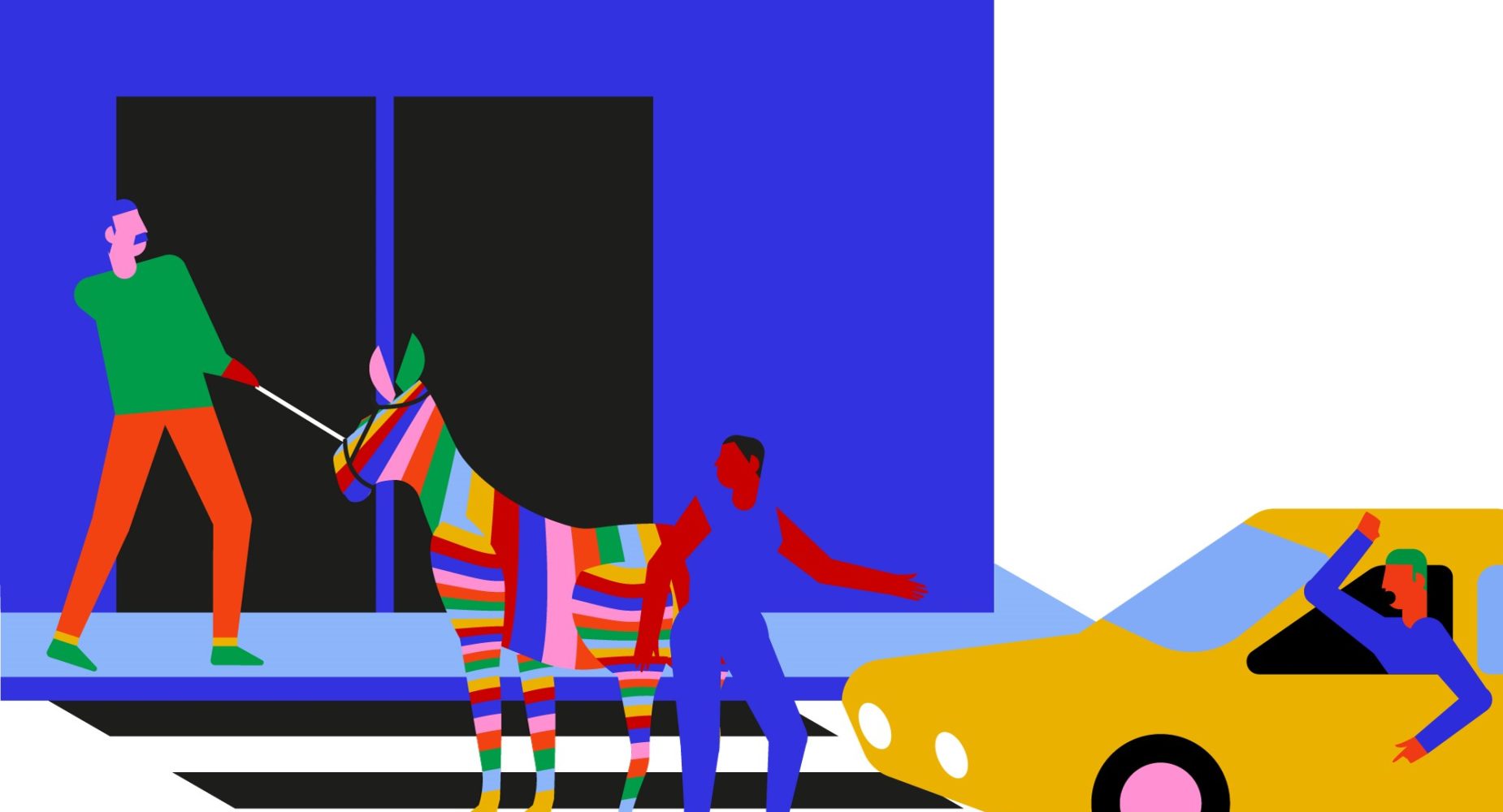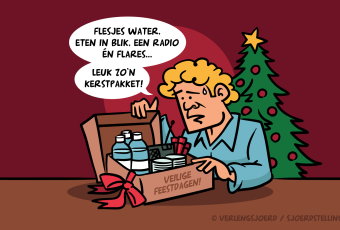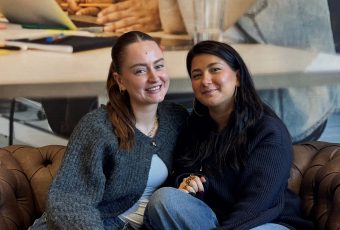
Diversiteitsmedewerkers hoger onderwijs ervaren geregeld heftige reacties of intimidatie
Scroll down for the English version.
Discussies over diversiteit en inclusie in het hoger onderwijs zijn de afgelopen jaren steeds politieker geworden en leiden vaker tot heftige reacties. Dit blijkt uit grootschalig onderzoek naar het diversiteits- en inclusiebeleid van 21 hogeronderwijsmedia van dertien universiteiten en acht hogescholen in Nederland. Verschillende diversiteitsmedewerkers die meewerkten aan het onderzoek zeggen bedreigd te zijn.
Waar het een aantal jaar geleden vooral ging over prestatiegerichte thema’s als meer vrouwen aan de top en het werven van meer internationale studenten, gaan de discussies nu over antiracisme, genderidentiteit en het aanpassen (‘dekoloniseren’) van het onderwijs, zo komt uit het onderzoek naar voren.
Het onderzoek ‘Diversiteit in tijden van polarisatie’ is uitgevoerd door de onafhankelijke journalistieke media van hogeronderwijsinstellingen georganiseerd in de Kring van Hoofdredacteuren van Hogeronderwijsmedia, en heeft een aantal artikelen opgeleverd die de betrokken media vanaf vandaag publiceren.
Online haat
Diversiteitsmedewerkers hebben geregeld te maken met online haatreacties, bedreigingen en intimidatie. Voor progressieve studenten en medewerkers is wat ze doen niet genoeg, terwijl een conservatieve groep alles wat gedaan wordt rond diversiteit en inclusie te veel vindt.
Verschillende van de ondervraagde diversiteitsmedewerkers zeggen persoonlijk bedreigd te zijn. Voor zover bekend deed niemand aangifte. Een diversiteitsmedewerker die anoniem wil blijven zegt hierover: “Onze namen zijn publiek, daardoor worden ook onze families slachtoffer van online haat. En soms worden de reacties zelfs gedeeld door Kamerleden die het niet eens zijn met ons werk.”
De reacties zijn intimiderend, mede omdat diversiteitsmedewerkers vaak zelf mensen zijn die tot een minderheidsgroep behoren, laat de medewerker weten. Voorzitter van het Landelijk Overleg Diversity Officers Aya Ezawa (Universiteit Leiden) zegt daarover in een van de artikelen: “Je moet een dikke huid hebben, inhoudelijk sterk zijn en diplomatieke vaardigheden hebben om de gemeenschap mee te krijgen.”
Grootste twistpunten
De grootste twistpunten, zo blijkt uit het onderzoek, zijn het inclusief maken van het lesmateriaal, het gebruik van een breder scala aan voornaamwoorden naast hij/hem en zij/haar en het aanpassen van mannen- of vrouwentoiletten naar all-gender wc’s.
Verder blijkt uit het onderzoek dat alle onderzochte instellingen geregeld evenementen organiseren rondom het thema diversiteit en inclusie. Alle instellingen hebben richtlijnen voor het schrijven van inclusieve vacatureteksten en bieden (soms verplicht) trainingen aan om onbewuste vooroordelen (unconscious bias) bij jezelf te herkennen. Ook hebben praktisch alle
onderzochte hogeronderwijsinstellingen minimaal één genderneutraal toilet, hoewel het soms even zoeken is. Negen van de twintig instellingen hebben ergens op hun onderwijslocatie een permanent lhbti-symbool om hun solidariteit met deze gemeenschap te betuigen. Dit is vaak in de vorm van een regenboogzebrapad of vlag.
Regionale verschillen
De mate van aandacht voor discussies en beleid over diversiteit verschilt per regio, zo blijkt uit het onderzoek. In de Randstad lijkt het thema meer te spelen bij studenten dan in de rest van het land. Al kan daarbij ook uitmaken hoeveel internationale studenten en medewerkers er zijn. In Maastricht bijvoorbeeld is de toon activistisch. Op de meer technisch gerichte universiteiten, zoals in Eindhoven en Twente, is de toon, ook bij de grote internationale gemeenschap, gematigder.
Dat wil volgens Alet Denneboom, hr-adviseur Participatie, Diversiteit en Inclusie van de Hanzehogeschool Groningen, niet zeggen dat diversiteit en inclusie een Randstedelijk probleem is. “Juist als de studentenpopulatie homogener is, voelen medewerkers of studenten die niet helemaal in het traditionele plaatje passen zich minder thuis.”
[Verantwoording onderzoek]
De deelnemende media van de universiteiten en hogescholen zijn aangesloten bij de Kring van Hoofdredacteuren van hogeronderwijsmedia.
Voor dit onderzoek zijn 36 beleidsdocumenten van 21 onderwijsinstellingen (13 universiteiten en 8 hogescholen) geanalyseerd. Dit betreft visies, strategieën, nota’s, actieplannen en position papers waarin onderwijsinstellingen hun plannen kenbaar maken. Voor dit onderzoek spraken we met diversiteitsmedewerkers van dertien universiteiten en zeven hogescholen over hun werk.
Dit zijn de instellingen die zijn onderzocht: Fontys hogescholen, Rijksuniversiteit Groningen, Vrije Universiteit Amsterdam, Universiteit Utrecht, Universiteit Twente, Avans hogescholen, Technische Universiteit Eindhoven, Erasmus Universiteit Rotterdam, Hogeschool Rotterdam, Radboud Universiteit Nijmegen, Hogeschool Utrecht, Technische Universiteit Delft, Hogeschool van Arnhem en Nijmegen, Maastricht University, Hogeschool van Amsterdam, Hanzehogeschool Groningen, Tilburg University, Saxion hogeschool, Universiteit van Amsterdam, Wageningen Universiteit, Universiteit Leiden.
Dit onderzoek is mede mogelijk gemaakt door een bijdrage van het Stimuleringsfonds voor de Journalistiek.
ENGLISH VERSION:
Diversity employees in higher education regularly face violent reactions or harassment
Discussions on diversity and inclusion in higher education have become increasingly political in recent years and lead to heated reactions more often. This is the outcome of a large-scale survey carried out by 21 higher education media on the diversity and inclusion policies of 13 universities and eight universities of applied sciences in the Netherlands. Several diversity employees who participated in the survey say they have been threatened.
Whereas a few years ago, the discussions were mainly focused on performance-based topics such as more women at the top and recruiting more international students, now, they are centred around anti-racism, gender identity and adapting (‘decolonising’) education, the survey shows.
The survey, entitled ‘Diversity in times of polarisation’, was carried out by the independent journalistic media of higher education institutions that are organised in the Council of Editors-in-Chief of Higher Education Media, and resulted in a number of articles that will be published by the involved media starting today.
Online hate
Diversity employees are regularly faced with online hate reactions, threats and harassment. Progressive students and staff feel that their efforts are not enough, whereas the conservative side believes that all efforts surrounding diversity and inclusion are excessive.
Several of the diversity employees who were interviewed said they had been personally threatened. As far as is known, no one has filed a police report. A diversity employee who wishes to remain anonymous commented the following: ‘Our names are public, and as a result, our families fall victim to online hate as well. And sometimes, the reactions are even shared by MPs who disagree with our work.’
The reactions are intimidating, partly because diversity employees often belong to minority groups themselves, the employee explains. President of the National Dialogue Network of Diversity Officers Aya Ezawa (Leiden University) commented on this in one of the articles: ‘You need a thick skin, solid substantive arguments and diplomatic skills to get the community on board.’
Main points of contention
According to the survey, the main points of contention are making teaching materials inclusive, using a wider range of pronouns besides he/him and she/her, and changing male or female toilets to all-gender toilets.
Furthermore, the results of the survey show that all surveyed institutions regularly organise events surrounding diversity and inclusion. All institutions have guidelines for writing inclusive vacancy texts and offer (sometimes compulsory) training to recognise unconscious bias in yourself. In addition, basically all higher education institutions surveyed have at least one gender-neutral toilet, although these toilets are not always easy to find. Nine out of twenty institutions have a permanent LGBTI+ symbol displayed somewhere around their educational venue to show their solidarity with this community; often in the form of a rainbow zebra crossing or flag.
Regional differences
There are regional differences in how much attention is paid to discussions and policies on diversity, the survey reveals. The topic seems to be of more concern to students in the Randstad region than in the rest of the country; although the number of international students and staff may also play a role in this. In Maastricht, for example, there is a very activist tone. At the technically-oriented universities, such as Eindhoven and Twente, a more moderate atmosphere prevails, even among the large international community.
According to Alet Denneboom, HR adviser Participation, Diversity and Inclusion at Hanze University of Applied Sciences Groningen, this does not mean that diversity and inclusion is a problem reserved for the Randstad. ‘It’s precisely when the student population is more homogeneous that staff or students who don’t quite fit into the traditional picture feel out of place.’
[Accountability for the survey]
The participating media from the universities and universities of applied sciences are members of the Council of Editors-in-Chief of Higher Education Media.
For the purpose of this survey, 36 policy documents from 21 educational institutions (13 universities and 8 universities of applied sciences) were analysed. These include visions, strategies, memoranda, action plans and position papers detailing the plans of the educational institutions in question.
For the purpose of this survey, we spoke to diversity officers from thirteen universities and seven universities of applied sciences to discuss their work.
These are the institutions surveyed:
Fontys Universities of Applied Sciences, University of Groningen, Vrije Universiteit Amsterdam, Utrecht University, University of Twente, Avans Universities of Applied Sciences, Eindhoven University of Technology, Erasmus University Rotterdam, Rotterdam University of Applied Sciences, Radboud University Nijmegen, Utrecht University of Applied Sciences, Delft University of Technology, HAN University of Applied Sciences, Maastricht University, Amsterdam University of Applied Sciences, Hanse University of Applied Sciences Groningen, Tilburg University, Saxion University of Applied Sciences, University of Amsterdam, Wageningen University, Leiden University.
This research was made possible by a contribution from the Journalism Promotion Fund.



Alle reacties (0)